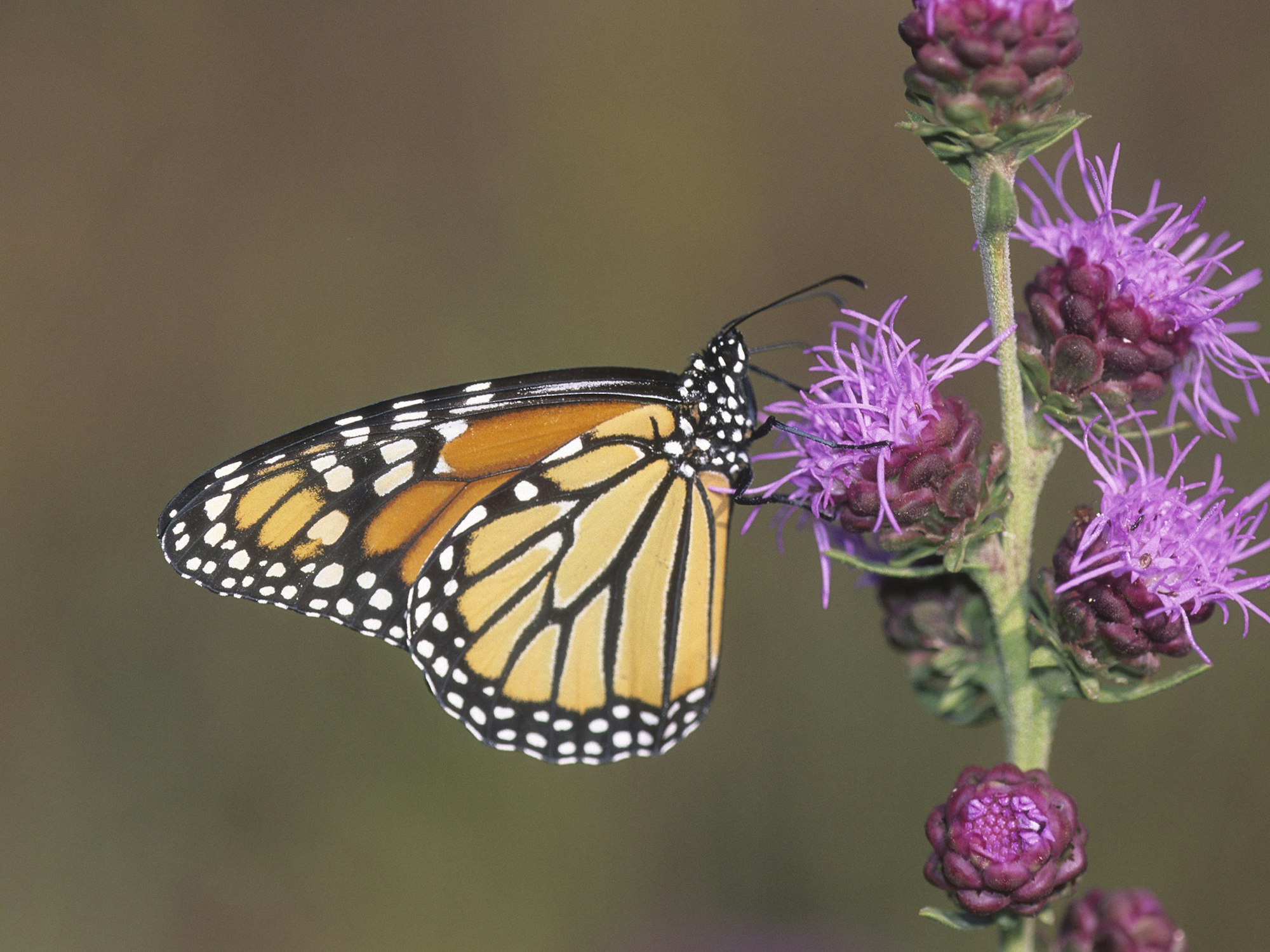Xerces Society Monarch Butterfly Breeding Habitat Plant Kit

Pollinators play a critical role in our everyday lives. Pollinators form the underpinning of a healthy and sustainable future for food and the environment but have shown signs of severe decline in recent years. When pollinators shrink in number, many plants either produce less seed or no seed at all. This means that when pollinators start disappearing, plants start disappearing.
With RCDTC support Big Bluff Ranch, Whittenburg Country School, and Dye Creek Wildlife Rescue have participated in the Xerces Project Monarch and Pollinator Habitat Kit program. Protecting and restoring habitat is a crucial step in the conservation of western monarchs and native pollinators.
Each entity is at different phases of habitat development that starts with the planting of 1600 perennial transplants, most of which are plugs. Half of the transplants are milkweeds, and half are non-milkweed nectar plants. All the plants chosen are native, drought-tolerant plants known to be used by monarch butterflies and native pollinators including:
- Asclepias speciosa
- Asclepias fascicularis
- Monardella villosa
- Solidago velutina ssp. californica
- Symphyotrichum chilense
- Verbena lasiostachys
Big Bluff Ranch (BBR) has interplanted pollinator plant plugs and rhizomes from the Xerces Society’s Monarch Butterfly Breeding Habitat Plant Kit program into its existing riparian restoration project that consists largely of woody perennials. The contiguous 6-acre designated restoration plot started in 2010. It has a drip irrigation system and is adjacent to Red Bank Creek. Planting the kit began in late January 2020 on approximately ½ acre and spaced over 5 plots within the restoration area. The kits complement the restoration activities and are placed in rows between the established native plants. Big Bluff Ranch remains optimistic about plant establishment as milkweed and other pollinator plants naturally exist throughout the 4,000 acre ranch. Through continued land stewardship practices, BBR aims to help improve the monarch population numbers in California.
Whittenberg Country School (WCS) has been able to enhance its native plant project due to the generous donation of pollinator plant plugs and rhizomes through the Xerces Society’s Monarch Butterfly Breeding Habitat Plant Kit program. A pollinator mass planting is a master design element of the WCS’s 3 acre campus remodel scheduled for the fall of 2020. This planting effort complements the existing bat and bee box ‘condominiums’ and contribute to the planned native plant pathway (gardens). The new layout will allow the public to view the gardens from the county road as well as during select ‘open garden’ days. Staff intended to incorporate the Xerces kit into its science-based lesson plans. Outreach activities in the near future will include student-created interpretive signage during the upcoming school year as well as public access. WCS is aware of the Xerces Society and producer partners Hedgerow Farms and S&S Seeds acknowledgment.
Dye Creek Wildlife Rescue (DCWR) has augmented planned pollinator habitat across its 8 acre property through the Xerces Society's Monarch Butterfly Breeding Habitat Plant Kits. Despite many challenges and some plant loss due to independent variables, the plantings started in or moved to controlled environments have since thrived. Additionally, DCWR has begun developing an outreach component to incorporate monarch and insect conservation messaging - a natural fit in discussing the food web and other aspects of ecology and wildlife biology.
You can help pollinators too! Learn more about California pollinators here!

